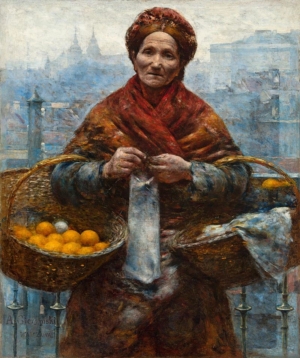
Rethinking Nazi Art: What Art Scholars Are Now Saying with Patrick Jung
Adolf Hitler originally planned to be an artist, but he abruptly changed his career course after World War I and entered the chaotic world of post-war German politics. He retained his love for art, and after seizing power in 1933, he imposed strict rules on artists in Nazi Germany. Scholars once believed Nazi art was not worthy of study; that it was backward, regressive, and little more than propaganda. Since the 1990s, art scholars have examined Nazi-era art more closely. Today, scholars find that art in Nazi Germany exhibited far more elements of twentieth-century modernism than earlier studies suggested. Moreover, very little of this art was overtly political. Both discoveries have fundamentally shifted the discussion of Nazi-era art.
Image By Aleksander Gierymski – http://cyfrowe.mnw.art.pl/dmuseion/docmetadata?id=19465, Public Domain, https://commons.wikimedia.org/w/index.php?curid=42882994
